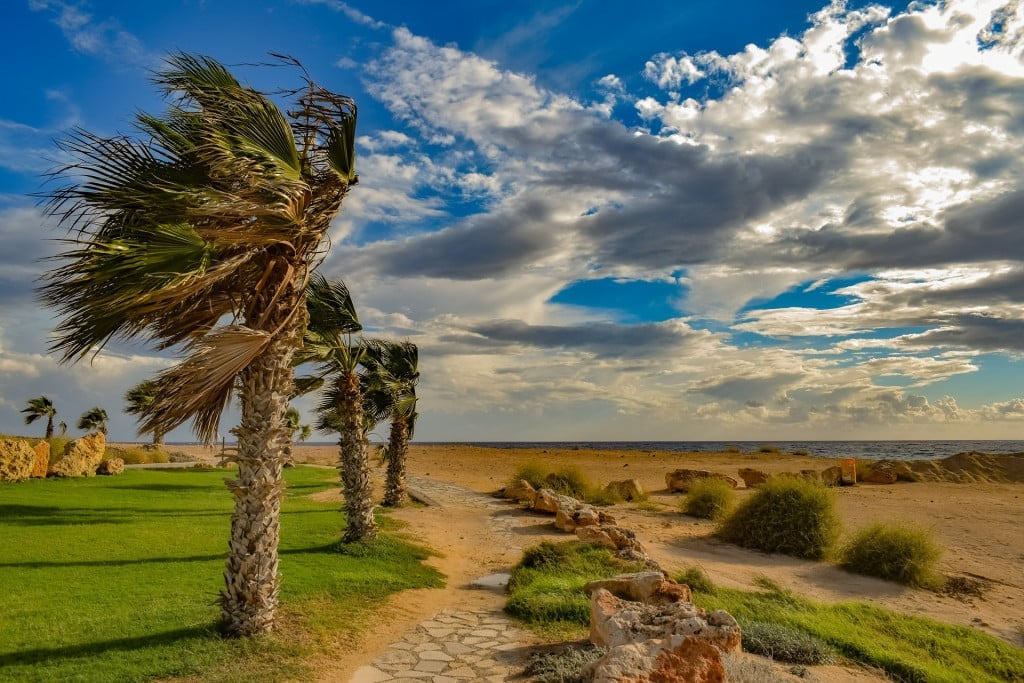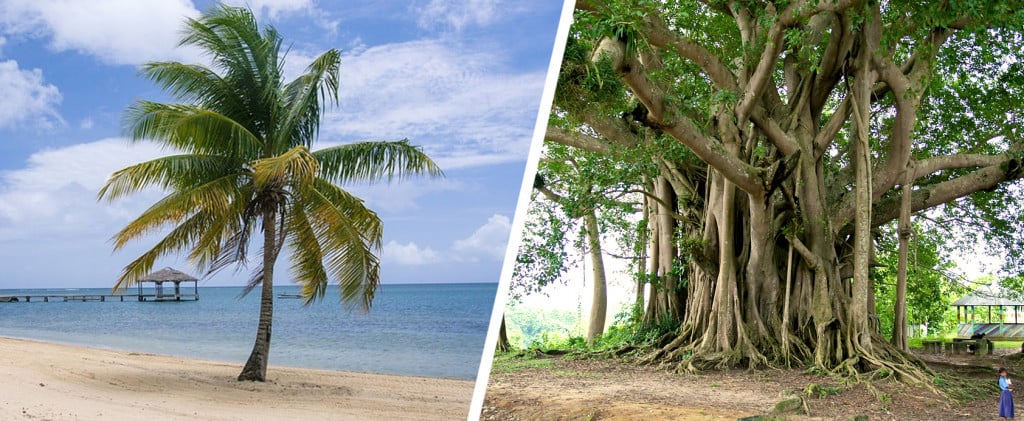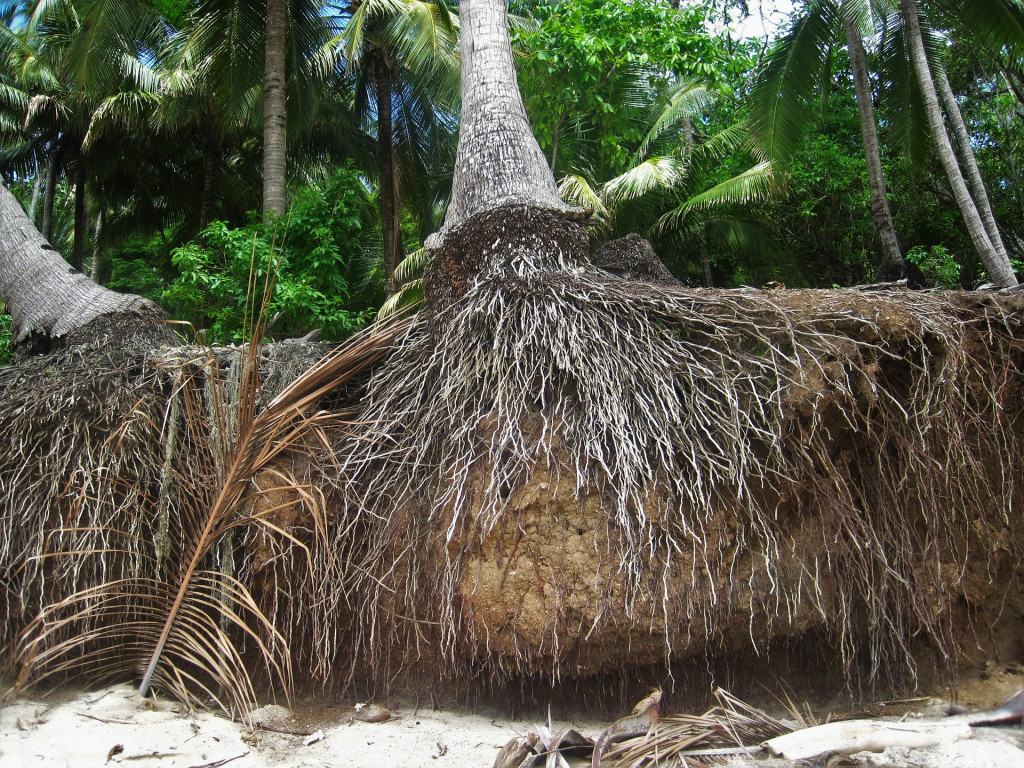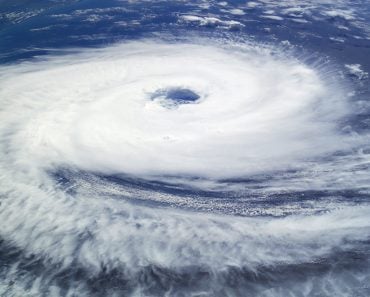Table of Contents (click to expand)
In violent storms, such as a hurricane or cyclone, palm trees have a number of advantages over other trees, including their spongy trunks, relatively few branches and leaves, and an unconventional root system.
A friend of mine lives near a beach that was recently hit by a cyclone. After the storm subsided and normality returned, she sent me some pictures of the beach and the surrounding area. Fortunately, the cyclone did not claim any lives in the area; it uprooted some trees and destroyed some huts on the beach.
What struck me, however, was that while the storm wreaked havoc on the beach, the palm trees that lined the beach looked more or less… intact.
You can look it up on the Internet and confirm that palm trees usually survive cyclones and other violent storms, while most other trees do not. Why is that?

Let’s examine why palm trees are able to withstand hurricanes (cyclones or typhoons) and other violent storms with such resilience.
Recommended Video for you:
Palm Trees Are Not “Woody”
Palm trees are monocots. Commonly known as monocotyledons, monocots are composed of grasses and grass-like flowering plants. Their seeds generally consist of only one cotyledon, which means that the seed produces one leaf when it germinates.
Simply put, this means that palm trees are not as woody as ‘regular’ trees; they are more like grass or have more in common with grass than with trees, like oaks.

While the thick trunks of oak trees can support the enormous weight of their branches, they are not as flexible. However, some palm tree species can bend almost 40-50 degrees before their trunks tear or snap.
This makes them a perfect candidate to withstand strong wind gusts and even tropical storms, such as hurricanes.
Lack Of Branches In Palm Trees
Have you ever noticed that palm trees have no branches? Some palm species have branches, but compare a palm tree with any other tree species that you would normally see in a coastal area, and you ‘l see the difference immediately.

Although a palm tree has branches, most of its branches fall off as it grows. And when the tree reaches its full height, only the uppermost branches remain.
The absence of branches means that a palm tree does not carry as much weight on its trunk. Furthermore, the absence of branches also reduces the “load” on the tree’s ‘exposure’ to very strong winds. Fewer branches, which are also close to the treetop, ensure that the tree does not sway back and forth too severely in a violent storm.
Leaves Of Palm Trees
While other trees have a dense network of branches and leaves that help maximize the absorption of sunlight for photosynthesis, palms have fewer leaves, but they are huge and quite unique.

In fine weather, these leaves expand and form a beautiful, full canopy at the top of the tree; the region of a palm tree in which its leaves are located is called the “canopy.”
Palm leaves vary by species, but most palm leaves consist of three types: pinnate, palmate, or costapalmate. These leaves can fold from the middle, thus reducing their surface area, significantly reducing the air resistance of the palm to strong winds.
Trees with “regular” leaves, however, do not fold and close in this way, and therefore offer greater resistance to strong winds.
Think of it this way: during a violent storm, would you rather wrap your arms around your chest and stick your head down, or stand with your arms outstretched in the middle of a street facing the full force of the storm?
Although the answer varies depending on how adventurous you feel at that moment, it would be safest to choose the first option, because this posture would reduce your body’s resistance to strong winds, which is exactly what a palm tree does.
Palm Trees Have An Unconventional Root System
Oaks and other large trees generally have some very strong roots that extend a few meters underground, but palm trees have a different kind of root system.

They have many short roots that spread over the top layers of the soil, which helps the tree secure a lot of soil in its “grip”.
If the root system of a tree has a large number of small roots spread laterally under the surface of the ground, then the force that strong winds and cyclones exert on the tree and its trunk is transferred down to the roots, where it spreads out in multiple directions under the ground.
This prevents the mechanical failure of a tree and prevents it from toppling or getting uprooted.
Here’s a simple way to visualize this: put your fist on the ground and pour soil on it until you cannot move your hand at all. Now, pull it up. Repeat the same activity, but this time keep your palm open, fingers outstretched, facing towards the ground. Then, pull your hand up.
You’ll notice that it’s much more difficult to pull up your hand if your palm is open and the fingers are outstretched. This is how the root system of a palm tree protects itself against uprooting during hurricanes.
You can read about how root systems prevent trees from toppling here.
This type of root system is another reason why palms can “weather” hurricanes and other violent storms.
Thus, a combination of several factors, including its root system, leaves and fewer branches, makes the palm tree a perfect candidate to withstand strong winds and violent storms that occur in coastal regions around the globe!
References (click to expand)
- Broschat, T. K. (2013, July 31). Palm Morphology and Anatomy. Edis. University of Florida George A Smathers Libraries.
- Monocots vs. Dicots. The University of California Museum of Paleontology
- Palm Leaf Structure - UF/IFAS Gardening Solutions. The University of Florida Institute of Food and Agricultural Sciences













